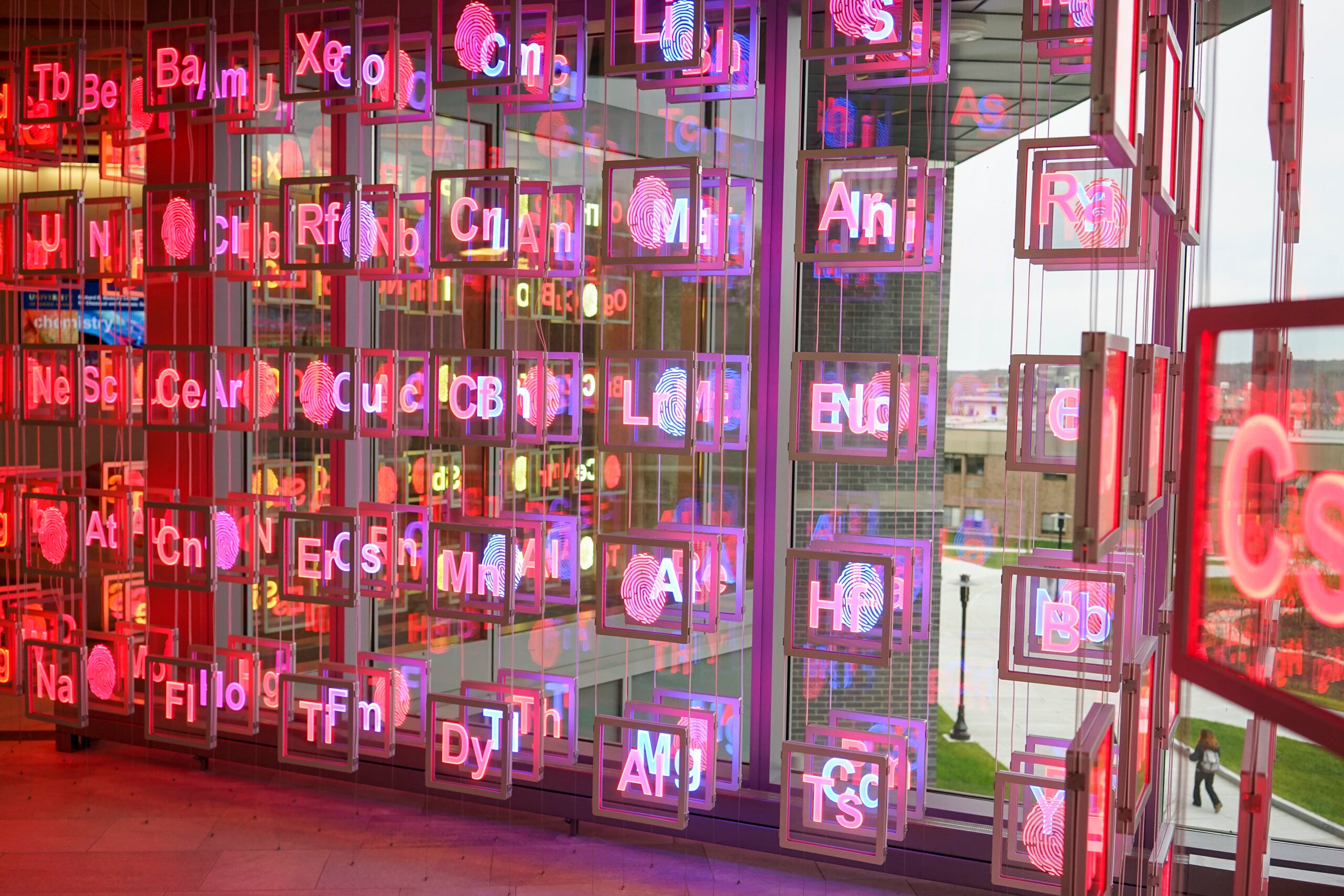KINGSTON, R.I. — September 20, 2018 — GeNeSiS, a public art installation by Erwin Redl that was commissioned by the University of Rhode Island for its Richard E. Beaupre Center for Chemical and Forensic Sciences, has won a prestigious CODA award. The Rhode Island State Council on the Arts made the recent announcement.
CODA, which stands for Collaboration of Design + Art, said this about the installation: “There was tough competition this year in the form of 426 entries from 30 countries around the world. Jurors were ‘impressed with your explanation of the goals of the project, and the successful integration of the artwork into the space. In addition, the collaborative process between all of the parties involved is an outstanding achievement.”
Redl’s work is informed by his combination of conceptual-structural thinking and profound craftsmanship both in electronic and traditional media. With a bachelor of arts in music composition from the University of Vienna, Austria and a master of fine arts degree in computer art from the School of Visuals Arts in New York, he has expanded his practice beyond the traditional fine art context.
The installation is a floor-to-ceiling depiction of the Periodic Table of the Elements that uses 480 light-emitting diode (LED) light panels that are suspended in three layers. It is particularly striking at night when its illuminated colors can be seen outside the building, even from a car traveling on Flagg Road.
The symbols of the periodic table are building blocks for interactive poetry. Users can submit their poetry through the project website: https://genesis.chm.uri.edu/. A committee reviews the submitted poems and selects the poems that will be displayed in the installation. The title “GeNeSiS” was chosen from a list of common words that can be formed from symbols of the periodic table. The symbols used represent germanium, neon, silicon and sulfur.
After review, an algorithm evaluates if the words can be built using the symbols of the periodic table. If the words of the poem can be created only using the symbols of the periodic table, the poem will be submitted to the curatorial committee. If a word or words cannot be created, the user is asked to change their input. The committee reviews the submitted poems on a regular basis and selects those that will be displayed in the installation. The installation is conceived both as a complete aesthetic infrastructure, as well as an open interactive artwork. Several slow motion color sequences are pre-programmed and randomly interspersed with poetry submitted by the viewers. In the micro mode, the symbols light up sequentially in the order they are used within the word, e.g. “Ge”, “Ne”, “Si”, and “S” illuminate one after the other if the word genesis is displayed. In the macro mode, the word scrolls horizontally across the entire light panel grid of the installation.
“Collaborations occurred on many levels during the one-year design, production, and installation process,” Redl said.
He cited the Beaupre Center for Chemical and Forensic Sciences’ information technology team, the programmers of Agile Oasis Technologies, his electronic engineer Leo Fernekes, and a tightly controlled production, as well as the on-site installation process led by the technicians of his production company, Paramedia LLC, for their efforts.
“Every team member’s contribution was necessary to complete this extremely successful public art project,” Redl said. “I am extremely grateful to Elizabeth Keithline the public art director of the Rhode Island State Council on the Arts for her courageous leadership role and advocacy for this exceptionally complex project.”
Keithline, the arts council’s public art director said, “We are honored to work with an artist of Erwin Redl’s caliber and delighted that his project has won this prestigious award.”

